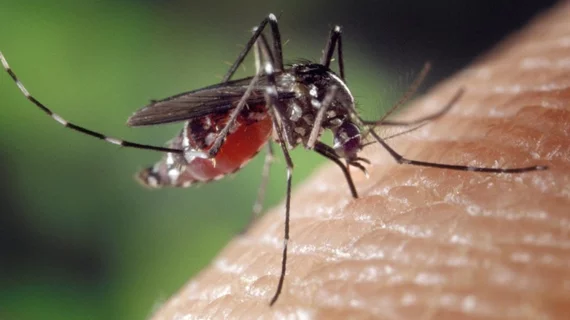AI reads images in milliseconds—bringing low-cost malaria detection to resource-strapped areas
A new model can detect parasites that cause malaria in blood sample images as accurately as human experts, but in a fraction of the time. It may be a boon for eradicating deaths caused by the disease in low-resource countries.
That’s according to a new study published Jan. 23 in the Journal of Digital Imaging, in which researchers created a deep learning-based algorithm capable of running in real-time on low-cost devices. When tested on two datasets collected with a cellphone, the model was more than 97% accurate at identifying malaria-inducing parasites.
Samson Chibuta and Aybar C. Acar, each with Middle East Technical University’s Health Informatics Department in Turkey, believe their tool may supplement commonly used microscopic methods and rapid-diagnostic malaria tests, which are effective but can prove slow and inaccurate.
“There is need for low-cost alternatives and complementary solutions for rapid malaria diagnosis and quantification for low-resource settings to potentially reduce the dependence on manual microscopic examination, which is an exhaustive and time-consuming activity,” the pair wrote, going on to claim that their prototype offers an “inexpensive alternative to, and a complementary solution for, rapid malaria screening."
This is critical given that 435,000 deaths from malaria were recorded in 2017, many of which occurred in sub-Saharan Africa. Catching and treating the disease early can stave off negative side effects and prevent deaths but, as mentioned, microscopic exams—the current gold standard—require skilled clinicians who are severely lacking in areas with the highest disease burden.
The researchers adapted the “generic object detection algorithm” called "You Only Look Once" to detect parasites on images captured with a digital microscope camera mounted on a conventional light microscope. In total, two datasets were used containing more than 3,800 blood-stained image samples.
After testing, the researchers found their model was highly effective, achieving 99.07% and 97.46% accuracy between the two sets. And if these results are extrapolated, the model could be applied to 100 images from a patient sample and “classify with confidence as to whether a patient has malaria or not.” The World Health Organization recommends at least 100 images to determine if a patient is negative, the team noted.
“The mean average precision on two test datasets is on par with human experts, but several orders of magnitude faster as we can process a single image in milliseconds using a simple mobile device,” Chibuta and Acar wrote. “Our solution can potentially be used as decision support tool for diagnostic consistency, help reduce the dependence on manual microscopic examination, relieve operator fatigue, and improve throughput rates,” they added.

